<Back to Index>
- Anarchist Revolutionary José Buenaventura Durruti Dumange, 1896
- Writer and Activist Alexander Berkman, 1870
PAGE SPONSOR
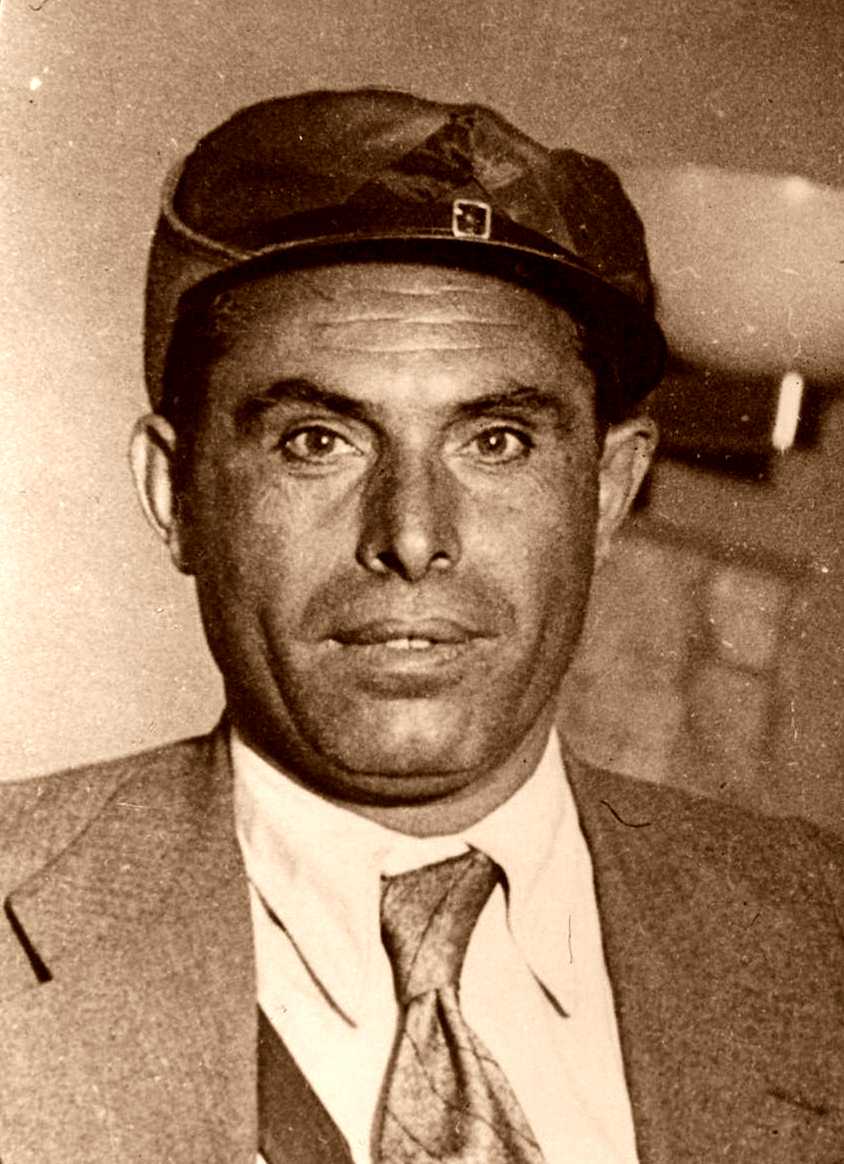
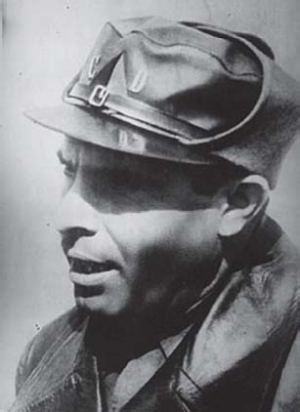
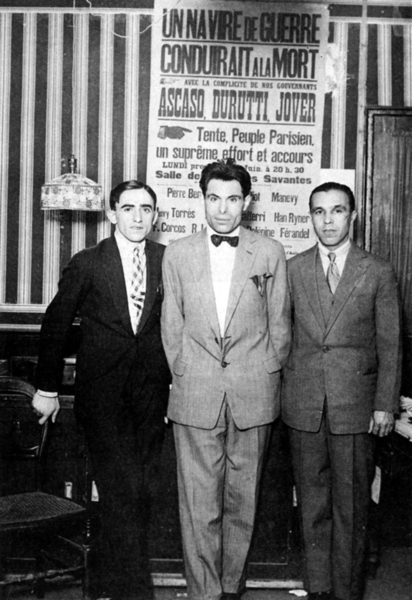
José Buenaventura Durruti Dumange (14 July 1896 – 20 November 1936) was a central figure of Spanish anarchism during the period leading up to and including the Spanish Civil War.
Durruti was born in León, Spain, son of Anastasia Dumangue and Santiago Durruti, a railway worker in the yard at Leon who described himself as a libertarian socialist. Buenaventura was the second of eight brothers (one was killed in the October 1934 uprising in the Asturias, another died fighting the Fascists on the Madrid front).
In 1910, aged 14, Durruti left school to become a trainee mechanic in the railway yard in León. Like his father, he joined the socialist Unión General de Trabajadores (UGT) union. In 1917 he took an active part in the strike of August 1917 called by the UGT when the government overturned an agreement between the union and the employers. The government brought in the Spanish Army to suppress the strike; they killed 70 people and injured more than 500 workers. 2,000 of the strikers were imprisoned without trial or legal process. Durruti managed to escape, but had to flee abroad to France where he came into contact with exiled anarchists. The brutality of the Spanish State had a profound and lasting effect on the young Durruti. From the fall of 1917 until the beginning of 1920, Durruti worked in Paris as a mechanic. He then decided to return to Spain and arrived at San Sebastian, Basque Country, just across the border. Here, he was introduced to local anarchists such as Suberviola, Ruiz, Aldabatrecu or Marcelino del Campo, with whom he formed the anarchist armed struggle group Los Justicieros ("The Avengers"). In 1921, during the inauguration of the Great Kursaal in San Sebastian, members of this group attempted unsuccessfully to murder King Alfonso XIII. Shortly after Buenasca, the then President of the recently formed anarchist controlled Confederacion Nacional del Trabajo CNT, persuaded Durruti to go to Barcelona to organize the workers there where the anarchist movement, as well as the syndicalists, was being brutally suppressed and most of its members jailed or executed. Here, with Juan García Oliver, Francisco Ascaso, and other members of Los Justicieros, he founded Los Solidarios ("Solidarity"). In 1923 the group was also implicated in the assassination of Cardinal Juan Soldevilla y Romero, as a reprisal for the killing of an anarcho - syndicalist union activist Salvador Seguí. After Miguel Primo de Rivera seized power in Spain in 1923, Durruti and his comrades organized attacks on the military barracks in Barcelona and on the border stations near France. These attacks were unsuccessful and quite a few anarchists were killed. Following these defeats, Durruti, Ascaso and Oliver fled to Latin America. They subsequently traveled widely, visiting Cuba and carrying out bank robberies in Chile and Argentina (Los Expropriadores Anarquistas).
Durruti and his companions returned to Spain and Barcelona, becoming an
influential militant within two of the largest anarchist organizations
in Spain at the time, the Federación Anarquista Ibérica
(FAI), and of the anarcho - syndicalist trade union Confederación
Nacional del Trabajo (CNT). The influence Durruti's group gained inside
the CNT caused a split, with a reformist faction under Ángel
Pestaña leaving in 1931 and subsequently forming the Syndicalist
Party.
Working closely with his comrades in the FAI and CNT Durruti helped to
co-ordinate armed resistance to the military rising of Francisco Franco,
an effort which was to prove vital in preventing General Goded's
attempt to seize control of Barcelona. During the battle for the
Atarazanas Barracks, Durruti's long time comrade and closest friend
Ascaso was shot dead. Less than a week later, on 24 July 1936 Durruti
led over 3,000 armed anarchists (later to become known as the Durruti
Column) from Barcelona to Zaragoza. After a brief and bloody battle at
Caspe (in Aragón), they halted at Pina de Ebro, on the advice of a regular army officer, postponing an assault on Zaragoza.
On 12 November, having been persuaded to leave Aragón by the anarchist leader Federica Montseny on behalf of the government, Durruti led his militia to Madrid to aid in the defense of the city. On 19 November, he was shot while leading a counter attack in the Casa de Campo area (Battle of Madrid). According to author Antony Beevor (The Spanish Civil War, 1982), Durruti was killed when a companion's machine pistol went off by mistake. At the time, the anarchists lied and claimed he had been hit by an enemy sniper's bullet "for reasons of morale and propaganda".
Another account of Durruti's death, given in Durruti: The People Armed by Abel Paz, claims that rather than being shot by a fellow soldier he was killed by distant gunfire coming from the area around the Clinical Hospital in University City (Madrid), which had been taken over by Nationalist forces. After a fight to regain control and contact was re-established with troops cut off from communications, Durruti returned temporarily to the Miguel - Angel barracks to issue orders. A message from Liberto Roig arrived informing Durruti that the Clinical Hospital was in the process of being evacuated. Alarmed, he asked his Chauffeur Julio Grave to get his car and leave immediately for the Hospital. His chauffeur gives the following testimonial:
We passed a little group of hotels which are at the bottom of this avenue (Queen Victoria Avenue) and we turned towards the right. Arriving at the big street, we saw a group of militiamen coming towards us. Durruti thought it was some young men who were leaving the front. This area was completely destroyed by the bullets coming from the Clinical Hospital, which had been taken during these days by the Moors and which dominated all the environs. Durruti had me stop the car which I parked in the angle of one of those little hotels as a precaution. Durruti got out of the auto and went towards the militiamen. He asked them where they were going. As they didn't know what to say, he ordered them to return to the front. The militiamen obeyed and Durruti returned towards the car. The rain of bullets became stronger. From the vast red heap of the clinical Hospital, the Moors and the Guardia Civil were shooting furiously. Reaching the door of the machine, Durruti collapsed, a bullet through his chest.
He died on 20 November 1936, in a makeshift operating theater set up
in what was formerly the Ritz Hotel at the age of 40. The bullet was
lodged in the heart, and the diagnosis was "death caused by pleural
hemorrhage". The doctors wrote a report in which the path of the bullet
and the character of the wound was recorded but not the caliber of the
bullet, since they hadn't removed it and there was no autopsy.
"It is we the workers who built these palaces and cities here in Spain and in America and everywhere. We, the workers, can build others to take their place. And better ones! We are not in the least afraid of ruins. We are going to inherit the earth; there is not the slightest doubt about that. The bourgeoisie might blast and ruin its own world before it leaves the stage of history. We carry a new world here, in our hearts."— Buenaventura Durruti
Durruti's body was transported across country to Barcelona for his funeral. Over a half million people filled the streets to accompany the cortege during its route to the Montjuïc Cemetery. It was the last large scale public demonstration of anarchist strength of numbers during the bitter and bloody Civil War.
Hugh Thomas remarks: “the death of Durruti marked the end of the
classic age of Spanish Anarchism. An Anarchist poet proclaimed that
Durruti’s nobility while living would cause ‘a legion of Durrutis’ to
spring up behind him.”
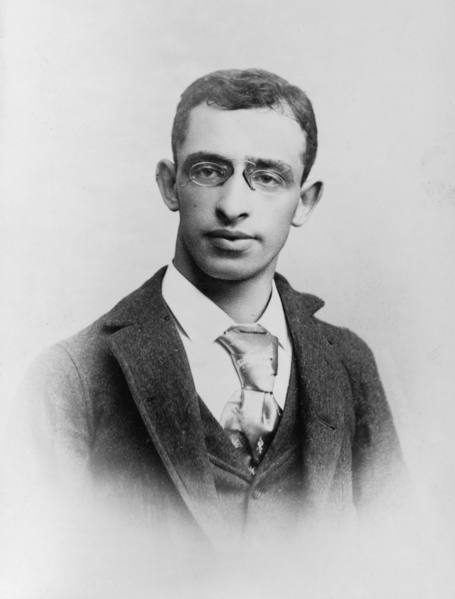

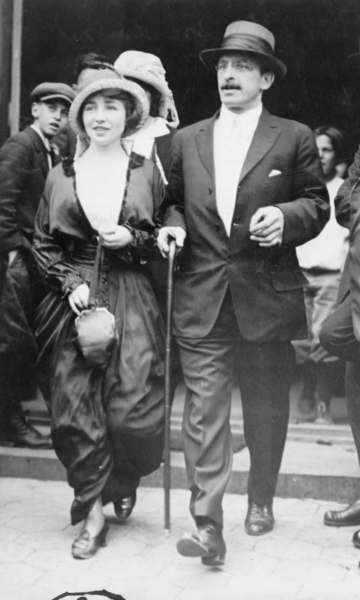
Alexander Berkman (November 21, 1870 – June 28, 1936) was an anarchist known for his political activism and writing. He was a leading member of the anarchist movement in the early 20th century.
Berkman was born in Vilnius in the Russian Empire and immigrated to the United States in 1888. He lived in New York City, where he became involved in the anarchist movement. He was the lover and lifelong friend of anarchist Emma Goldman. In 1892, Berkman attempted to assassinate businessman Henry Clay Frick as an act of propaganda of the deed. Though Frick survived the attempt on his life, Berkman served 14 years in prison. His experience in prison was the basis for his first book, Prison Memoirs of an Anarchist.
After his release from prison, Berkman served as editor of Goldman's anarchist journal, Mother Earth, and he established his own journal, The Blast. In 1917, Berkman and Goldman were sentenced to two years in jail for conspiracy against the newly instated draft. After their release from prison, they were arrested — along with hundreds of others — and deported to Russia. Initially supportive of that country's Bolshevik revolution, Berkman quickly voiced his opposition to the Soviet use of violence and the repression of independent voices. In 1925, he published a book about his experiences, The Bolshevik Myth.
While living in France, Berkman continued his work in support of the
anarchist movement, producing the classic exposition of anarchist
principles, Now and After: The ABC of Communist Anarchism. Suffering from ill health, Berkman committed suicide in 1936.
Berkman was born Ovsei Osipovich Berkman in the city of Vilnius (then part of the Russian Empire). He was the youngest of four children born into a well off Jewish family. Berkman grew up in Saint Petersburg, Russia, where he adopted the more Russian name Alexander; he was known among his friends as Sasha, a diminutive for Alexander.
The Berkman family lived a comfortable life, with servants and a summer house. Berkman attended the gymnasium, where he received a classical education. As a youth, Berkman was influenced by the growing radicalism that was spreading among workers in the Russian capital. In 1881, Berkman's school lessons were interrupted when the bomb blast that killed Tsar Alexander II shook the building. At home that evening, while his parents spoke in hushed tones Berkman learned more about the assassination from his "Uncle Maxim", Narodnik Mark Natanson:
Father looked at mother severely, reproachfully, and Maxim was unusually silent, but his face seemed radiant, an unwonted brilliancy in his eye. At night, alone with me in the dormitory, he rushed to my bed, knelt at my side, and threw his arms around me and kissed me, and cried, and kissed me. His wildness frightened me. "What is it, Maximotchka?" I breathed softly. He ran up and down the room, kissing me and murmuring, "Glorious, glorious! Victory!"
Between sobs, solemnly pledging me to secrecy, he whispered mysterious, awe inspiring words: Will of the People! — tyrant removed — Free Russia.
When Berkman was 15 his father died, and his mother died the
following year. In February 1888 Berkman left for the United States.
Soon after his arrival in New York City, Berkman became an anarchist through his involvement with groups that had formed to campaign to free the men convicted of the 1886 Haymarket bombing. He soon came under the influence of Johann Most, the best known anarchist in the United States, and an advocate of propaganda of the deed — attentat, or violence carried out to encourage the masses to revolt. Berkman became a typesetter for Most's newspaper Freiheit.
In New York, Berkman met and began a romance with Emma Goldman, another Russian immigrant. They moved into a communal apartment with his cousin Modest "Fedya" Stein and Goldman's friend, Helen Minkin. Although their relationship had numerous difficulties, Berkman and Goldman would share a close bond for decades, united by their anarchist principles and commitment to personal equality.
Berkman eventually broke with Most and aligned himself with another publication, Die Autonomie, but he remained committed to the concept of violent action as a tool for inspiring revolutionary change.
Berkman and Goldman found their first opportunity for political
action in the Homestead Strike. In June 1892, workers at a steel plant
in Homestead, Pennsylvania, were locked out when negotiations between
the Carnegie Steel Company and the Amalgamated Association of Iron and
Steel Workers failed. Henry Clay Frick, the factory's manager, hired
three hundred armed guards from the Pinkerton Detective Agency to break
the union's picket lines.
When the Pinkerton guards arrived at the factory on the morning of July
6, a gunfight broke out. Nine union workers and seven guards were
killed during the fight, which lasted twelve hours.
Newspapers across the country defended the union workers, and Berkman and Goldman decided to assassinate Frick. Berkman believed the assassination would arouse the working class to unite and revolt against the capitalist system. Berkman's plan was to assassinate Frick and commit suicide afterward; Goldman's role was to explain Berkman's motives after his death. Berkman tried to make a bomb, but when that failed he went to Pittsburgh where he bought a handgun and a decent suit.
On July 23, Berkman went into Frick's office armed with a gun and a sharpened steel file. He shot Frick three times, then grappled with him and stabbed him in the leg. A group of nearby workers came to Frick's rescue and beat Berkman unconscious. He was convicted of attempted murder and given a twenty - two-year prison sentence. Worse, Berkman's attentat had failed in its objective of rousing the masses: workers and anarchists alike condemned the assassination attempt.
Berkman served 14 years of his sentence and was released from prison on May 18, 1906. Goldman met him on the Detroit train latform, but she found herself "seized by terror and pity" at his gaunt appearance. During his prison term, he had become Americanized, but Berkman struggled to readjust to life as a free man. A lecture tour produced anxiety and stress, and he purchased a handgun in Cleveland with the intention of killing himself. Instead, he returned to New York, where he learned that Goldman and other activists had been arrested at a meeting concerning Leon Czolgosz. This violation of freedom of assembly moved him to action, and he declared "My resurrection ... I have found work to do" as he worked to secure their release.
Soon Berkman joined Goldman as one of the leading figures of the
anarchist movement in the U.S. With Goldman's encouragement, Berkman
wrote an account of his prison years, Prison Memoirs of an Anarchist, which he said helped him recover from the experience of being a prisoner.
From 1907 to 1915, Berkman was editor of Goldman's journal Mother Earth, and under his stewardship it became the leading anarchist publication in the U.S. Editing the magazine was a revitalizing experience for Berkman; his relationship with Goldman faltered, however, and he had an affair with a fifteen year old anarchist named Becky Edelsohn.
Berkman helped establish the Ferrer Center in New York during 1910
and 1911, and served as one of its teachers. The Ferrer Center, named in
honor of Spanish anarchist Francisco Ferrer, included a school that
encouraged independent thinking among its students. The Ferrer Center
also served as a community center for adults.
In September 1913, the United Mine Workers called a strike against coal mining companies in Ludlow, Colorado. The largest mining company was the Rockefeller family owned Colorado Fuel & Iron Company. On April 20, 1914, the Colorado National Guard attacked a tent colony of striking miners and their families and, during a day long fight, 26 people were killed.
During the strike, Berkman organized demonstrations in New York in support of the miners. In May and June, he and other anarchists led several protests against John D. Rockefeller, Jr. The protests eventually moved from New York City to Rockefeller's home in Tarrytown, New York, and resulted in the beatings, arrests, and imprisonments of a number of anarchists. The strong police response to the Tarrytown protests led to a bomb plot by several Ferrer Center anarchists.
In July, three associates of Berkman — Charles Berg, Arthur Caron, and Carl Hanson — began collecting dynamite and storing it at the apartment of another conspirator, Louise Berger. Some sources, including Charles Plunkett, one of the surviving conspirators, say that Berkman was the chief conspirator, the oldest and most experienced member of the group. Berkman later denied any involvement or knowledge of the plan.
At 9 a.m. on July 4, Berger left her apartment for the Mother Earth
offices. Fifteen minutes later a deadly explosion took place. The bomb
had exploded prematurely, shaking the sixth story of Berger's tenement
building, wrecking the three upper floors and killing Berg, Caron,
Hanson, and a woman, Marie Chavez, who apparently was not involved in
the conspiracy. Berkman arranged the dead men's funerals.
In late 1915, Berkman left New York and went to California. In San Francisco the following year he started his own anarchist journal, The Blast. While it was published for just 18 months, The Blast was considered second only to Mother Earth in its influence among U.S. anarchists.
On July 22, 1916, a bomb exploded
during the San Francisco Preparedness Day Parade, killing ten people
and wounding 40. Police suspected Berkman, although there was no
evidence, and ultimately their investigation focused on two local labor activists, Thomas Mooney and Warren Billings.
Although neither Mooney nor Billings were anarchists, Berkman came to
their aid: raising a defense fund, hiring lawyers, and beginning a
national campaign on their behalf. Mooney and Billings were convicted,
with Mooney sentenced to death and Billings to life imprisonment. Berkman arranged for Russian anarchists to protest outside the American embassy in Petrograd during the Russian Revolution, which led U.S. President Woodrow Wilson
to ask California's governor to commute Mooney's death sentence. When
the governor reluctantly did so, he said that "the propaganda in
[Mooney's] behalf following the plan outlined by Berkman has been so
effective as to become world wide." Billings and Mooney both were pardoned in 1939.
In 1917 the U.S. entered World War I and Congress enacted the Selective Service Act of 1917, which required all men between the ages of 21 and 30 to register for military conscription. Berkman moved back to New York, where he and Goldman organized the No Conscription League of New York, which proclaimed: "We oppose conscription because we are internationalists, anti - militarists, and opposed to all wars waged by capitalistic governments." The organization was at the forefront of anti - draft activism, and chapters were established in other cities. The No Conscription League changed its focus from public meetings to disseminating pamphlets after police started disrupting the group's public events in search of young men who had not registered for the draft.
Berkman and Goldman were arrested during a raid of their offices on
June 15, 1917, during which police seized "a wagon load of anarchist
records and propaganda material". The pair were charged under Espionage
Act of 1917 with "conspiracy to induce persons not to register", and
were held on $25,000 bail each.
Berkman and Goldman defended themselves during their trial. Berkman invoked the First Amendment, asking how the government could claim to fight for "liberty and democracy" in Europe while suppressing free speech at home:
Will you proclaim to the world that you who carry liberty and democracy to Europe have no liberty here, that you who are fighting for democracy in Germany, suppress democracy right here in New York, in the United States? Are you going to suppress free speech and liberty in this country, and still pretend that you love liberty so much that you will fight for it five thousand miles away?
The jury found them guilty and Judge Julius Marshuetz Mayer imposed
the maximum sentence: two years' imprisonment, a $10,000 fine, and the
possibility of deportation after their release from prison. Berkman
served his sentence in the Atlanta Federal Penitentiary, seven months of
which were in solitary confinement for protesting the beating of other
inmates.
When he was released on October 1, 1919, Berkman looked "haggard and
pale"; according to Goldman, the 21 months Berkman served in Atlanta
took a greater toll on him than his fourteen year incarceration in
Pennsylvania.
Berkman and Goldman were released at the height of the first U.S.
Red Scare; the Russian Revolution of 1917, led by the Bolsheviks,
combined with anxiety about the war produce a climate of anti - radical
and anti - foreign sentiment. The U.S. Department of Justice's General
Intelligence Division, headed by J. Edgar Hoover and under the direction
of Attorney General Alexander Mitchell Palmer, initiated a series of raids to arrest leftists.
While they were in prison, Hoover wrote: "Emma Goldman and Alexander
Berkman are, beyond doubt, two of the most dangerous anarchists in this
country and if permitted to return to the community will result in undue
harm." Under the 1918 Anarchist Exclusion Act,
the government deported Berkman, who had never applied for U.S.
citizenship, along with Goldman and over two hundred others, to Russia.
At a farewell banquet in Chicago, Berkman and Goldman were told the news of the death of Henry Clay Frick, whom Berkman had tried to kill more than 25 years earlier. Asked for a comment by a reporter, Berkman said Frick had been "deported by God".
Berkman's initial reaction to the Bolshevik revolution was enthusiastic. When he first heard of their coup, he exclaimed "this is the happiest moment of my life", and he wrote that the Bolsheviks were the "expression of the most fundamental longing of the human soul". Arrival in Russia stirred great emotions in Berkman, and he described it as "the most sublime day in my life", surpassing even his release after 14 years in prison.
Berkman and Goldman spent much of 1920 traveling through Russia collecting material for a proposed Museum of the Revolution. As the pair traveled around the country, they found repression, mismanagement, and corruption instead of the equality and worker empowerment they had dreamed of. Those who questioned the government were demonized as counter - revolutionaries, and workers labored under severe conditions. They met with Vladimir Lenin, who assured them that government suppression of press liberties was justified. "When the Revolution is out of danger," he told them, "then free speech might be indulged in".
Strikes broke out in Petrograd in March 1921 when workers demonstrated for better food rations and more autonomy for their unions. Berkman and Goldman supported the strikers, writing: "To remain silent now is impossible, even criminal." The unrest spread to the port of Kronstadt, where Trotsky ordered a military response. In the battle that ensued, 600 sailors were killed; 2,000 more were arrested; and 500 to 1500 Soviet troops died. In the wake of these events, Berkman and Goldman decided there was no future in the country for them. Berkman wrote in his diary:
Gray are the passing days. One by one the embers of hope have died out. Terror and despotism have crushed the life born in October. ... Dictatorship is trampling the masses under foot. The Revolution is dead; its spirit cries in the wilderness. ...
I have decided to leave Russia.
Berkman and Goldman left the country in December 1921 and moved to Berlin
for a few years. Almost immediately, Berkman began to write a series of
pamphlets about the Russian Revolution. "The Russian Tragedy", "The
Russian Revolution and the Communist Party", and "The Kronstadt
Rebellion" were published during the summer of 1922.
Berkman planned to write a book about his experience in Russia, but he
postponed it while he assisted Goldman as she wrote a similar book,
using as sources material he had collected. Work on Goldman's book, My Two Years in Russia, was completed in December 1922, and the book was published in two parts with titles not of her choosing: My Disillusionment in Russia (1923) and My Further Disillusionment in Russia (1924). Berkman worked on his book, The Bolshevik Myth, throughout 1923 and it was published in January 1925.
Berkman moved to France in 1925. He organized a fund for aging anarchists including Sébastien Faure, Errico Malatesta, and Max Nettlau. He continued to fight on behalf of anarchist prisoners in the Soviet Union, and arranged the publication of Letters from Russian Prisons, detailing their persecution.
In 1926, the Jewish Anarchist Federation of New York asked Berkman to write an introduction to anarchism intended for the general public. By presenting the principles of anarchism in plain language, the New York anarchists hoped that readers might be swayed to support the movement or, at a minimum, that the book might improve the image of anarchism and anarchists in the public's eyes. Berkman produced Now and After: The ABC of Communist Anarchism, first published in 1929 and reprinted many times since (often under the title What Is Communist Anarchism? or What Is Anarchism?). Anarchist historian Paul Avrich described Now and After as "the clearest exposition of communist anarchism in English or any other language".
Berkman spent his last years eking out a precarious living as an editor and translator. In the 1930s his health began to deteriorate, and Berkman underwent two unsuccessful operations for a prostate condition in early 1936. In constant pain, forced to rely on the financial help of friends, and reliant on the care of his companion, Emmy Eckstein, Berkman decided to commit suicide. In the early hours of June 28, 1936, unable to endure the physical pain of his ailment, Berkman shot himself with a handgun, but he failed to make a clean job of it. The bullet lodged in his spinal column, paralyzing him. Goldman rushed to Nice to be at his side. He sank into a coma in the afternoon, and died at 10 o'clock that night.
Berkman died weeks before the start of the Spanish Revolution, modern history's clearest example of an anarcho - syndicalist revolution. In July 1937, Goldman wrote that seeing his principles in practice in Spain "would have rejuvenated [Berkman] and given him new strength, new hope. If only he had lived a little longer!"